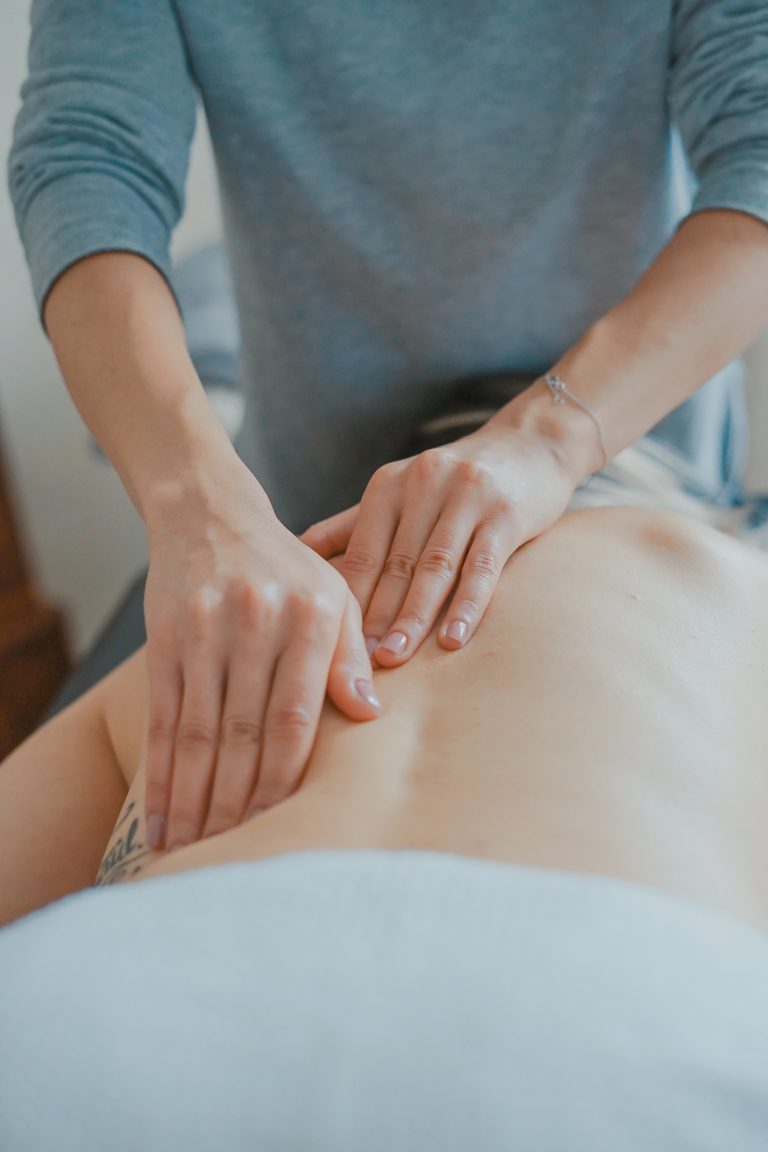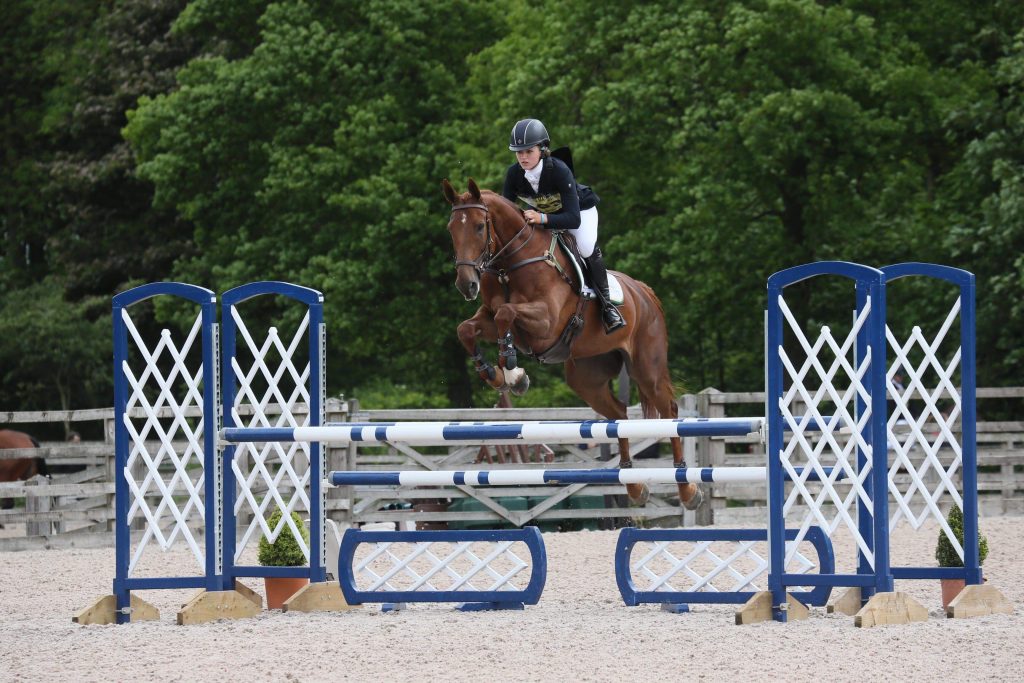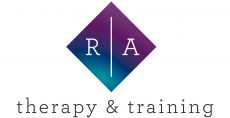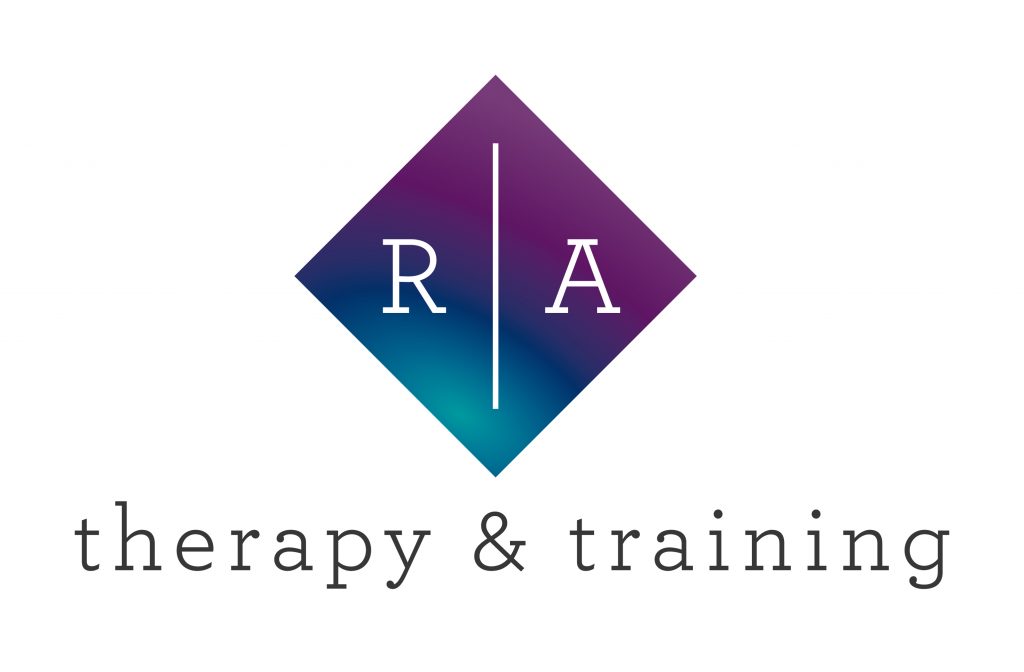Human Services
RA Therapy & Training provides a comfortable, private treatment with free parking for a range of human treatments in Shipston-on-Stour. Alternatively the mobile clinic can brought to your yard or event to provide a warm, clean and comfortable treatment space in any location (for more details, see the Mobile Clinic page)


Sports & Remedial Massage
Sports and Remedial Massage involves the manipulation of soft tissues to treat or prevent injury. This treatment promotes the health of muscles and connective tissues, it can release tension and reduce pain thus restoring range of motion and symmetry.
Some (but not all) of the benefits of sports massage include:
Increased joint range of motion (ROM)
Increased flexibility
Increased sense of well-being
Decreased muscle tension
Decreased neurological excitability (nerves more relaxed)
Decreased muscle spasms
Better sleep
- Sports & Remedial Massage - £45 per session
What is Sports Massage?
Sports massage is the process of manipulating the muscles, connective tissue and fascia to relieve pain. This form of deep tissue massage can be used to relieve the tension and restrictions that can build up as a result of undertaking repetitive and strenuous physical activities.
What are the benefits of Sports Massage?
Sports massages have plenty of benefits both physically and psychologically. It has no niche market, further allowing it to be geared towards everyone. The technique of the massage is adapted to focusing on the areas that are overused from strenuous activities/movements.
Physically, a sports massage will promote a smoother flow of blood and nutrients, reduce pain and tension, and assist with the rehabilitation of an injury. This is all done through the process of manipulating the muscles to allow them to soften and relax.
Psychologically, it will benefit you as it helps to reduce feelings of stress and anxiety. This occurs due to endorphins being released into your body, allowing you to feel happy and calm. From this, your mood will have improved as the pain is restricted.
Stronger Flow of Blood/Nutrients
Massaging the muscle tissue will stimulate the flow of blood, this massaging movement allows the blood vessels to open and dilate; letting the nutrients to be passed into the bloodstream significantly easier. These intense massaging movements help the flow through both the blood and lymph vessels. As muscles get tight and stiff, they act similarly to a sponge and squeeze blood out, further depriving the tissues of nutrients which can help to repair damaged tissues. The motion of massaging the muscles is an important part of the treatment, allowing the damaged area to receive the appropriate nutrients and a healthy supply of oxygen.
Reduces Pain
When in pain our body will naturally release endorphins to help minimise any feelings of discomfort. Endorphins are a natural form of pain relief and can also be brought out through massage. By manipulating the muscles, any congestion of metabolic irritants will be reduced as the muscles relax. As well as this, muscle tension will be released, reducing any pain.
Promotes Relaxation
Having a good range of movement will help with the relaxation of muscles. Through sports massage, you can increase your range of motion, which in turn will give the muscles the opportunity to relax; providing them with more mobility. A poor range will result in having tight or tense muscles which can result in injury to muscle tissue. To improve this, a sports massage will help to warm up the muscles. Improving not only physical relaxation but mental relaxation too, due to the pain being restricted and drifting away.
Reduce Anxiety/Stress
Sports Massages aren’t just for physical pain; they also help psychologically. In the brain, endorphins are released by the pituitary gland and the hypothalamus. Alongside this, neurotransmitters are released which help to reduce anxiety and feelings of stress while also acting as a natural pain reliever and improving your mood.
Boosts Performance
A reduction in pain and looser muscles will allow you to have a stronger performance in your specific/chosen field or activity. It’s important to warm up your muscles before exercising as it relaxes them enabling them to become more mobile,allowing a stronger performance and reducing the risk of injury. Relaxing the muscles will offer you the opportunity to strengthen them further optimising your athletic performance.
Better Flexibility/Mobility
When exercising or enduring in strenuous activity muscles will tense up and get stiff. Due to this, it is very beneficial to ensure that you stretch the muscles you worked after your activity, giving them the opportunity to relax and ease up.
A massage works similarly to stretching as it will get in deep to the muscle, relaxing and softening it to improve mobility and flexibility.
Ease Sticky Bones
Sports massages can help to separate the muscle fibres that may have stuck to each other or to soft tissue that surrounds them. Occasionally, they can also stick to bones which reduces mobility and increases the amount of stiffness in the muscles. An excellent way to ease the stiffness of muscles and stop the muscle fibres sticking is to indulge in a sports massage to mobilise your muscle and soft tissues.
Reduces Metabolic Waste
As mentioned earlier, massaging muscles will increase the blood flow. As the blood flow is improved, continuing to massage the damaged area will help remove any metabolic waste products from the tissue. These products could be something such as lactates; removing them, it will help aid the recovery.
Fewer Impairments to Muscular Function
By removing the tension in the muscles, it helps to prevent further injuries. Tight muscles are unable to stretch which makes it harder to move freely. With stretched muscles, there is an increase in the blood flow which will enable a better flow of oxygen and nutrients that are essential for a healthy repair of damaged tissues and fibres.
Indulging in a sports massage will allow you to see if there are any areas of muscle or soft tissue that need attention. Knowing this, the physiotherapist can then help to strengthen the weak area to avoid it from breaking down further.
Reduces Muscle Tension
Our bodies will always be there for us, so it’s important that we respect them. If you are a physically active person, you may find that you could benefit from a sports massage. From massaging there will be a reduction in the amount of pain you feel in your muscles, allowing them to loosen and have an increased amount of flexibility.
Rehabilitation of an Injury
A massage will help to facilitate an injury. The process and nature of a massage will allow more oxygen to flow to the muscle tissue increasing the mobility. This flow of oxygen will allow the muscle to be nourished with the appropriate nutrients and be free from any knotted tension. Sports massages will help rebuild the strength in weaker muscles and tissues by warming up the muscles. Warming them up will increase mobility and assist in improving muscle flexibility.
Improves Your Mood
Massages release endorphins; they are a chemical in the brain that allows you to feel happy. They’re released with other chemicals such as dopamine, oxytocin and serotonin. During a massage, the flow of blood is increased enabling it to have a smoother flow. As a result, these chemicals are released into the system allowing you to feel more relaxed and happier.
Bowen Technique
The Bowen Technique is a non-invasive holistic therapy recognised and aknowledged for it’s beneficial and far reaching effects on the body. By relieving tension and relieving pain this therapy helps reestablish equialbrium and promote healing as well as increasing flexibility and mobility. The effects of the bowen technique include pain relief, lymphatic benefits and musculoskeletal realignment
- Bowen Technique - £40 per session
Bowen is very gentle and suitable for all ages.
The Bowen Technique is a gentle therapy that is applied to areas of the body, using thumbs and fingers in a specific process or order.
The Bowen move is very distinctive and is applied at very precise points on the body. It involves the movement of soft tissue in a specific way. The move is a rolling-type move of the thumbs and forefingers, and is designed to stimulate the tissue and nerve pathways, creating a focus for the brain.
The move does not slide or flick over the surface of the skin, but uses the slack in the overlying skin to move over the underlying tissue, so each move covers a small area, defined by how far an individual’s skin can move over a targeted area.
During a Bowen treatment breaks occur, allowing the body to rest for a few minutes initiates the process of repair and is important. The length of the breaks will vary from client to client and with different procedures, but on average we will leave clients for around two minutes in between each set of moves. The breaks are probably one of the least understood parts of Bowen and yet it is during the breaks that the work starts to take effect and changes are implemented. The most fundamental principle of Bowen is that it is the client that is doing the work, not the therapist, and for this to happen the body needs time.
One of the most interesting areas of the body is the brain. The basic function of the brain is to receive information from our sensory organs and interpret this information, such as light, sound, pain, movement. This enables conscious communication within our body. Neuroplasticity which is the brains ability to recognise itself by forming new neural connections, allows the nerve cells in the brain to adjust their activities in response to new situations or changes in their environment. This includes a stimulus through touch.
There are something like 600,000 signals that travel from the brain into the body every second and these in turn come back to the brain with information which is then interpreted and sent back out. Whenever we feel, hear, see or even think something, the brain brings in past experience in order to categorise the sensation and create an appropriate response.
In the case of the Bowen move, the brain is unable to do this instantly and needs more information to form a response. As it is, just when the brain is asking for more information, the therapist has left the room, and therefore the brain has to send specific signals to the area in order to gauge a response. If the client is lying down, the immediate response is nearly always rapid and deep relaxation. The client will also often report that they feel a tingling sensation or warmth in the area just worked on. “It felt like your hands were still on me,” is a common comment.
One of the more difficult elements to come to terms with is how little ‘hands on work’ is done during a session. In addition, the client may well walk out of the treatment room having felt little or no improvement over and above a sense of relaxation.
However, the reactions to Bowen in the days following a treatment can often belie its soft and gentle approach. Stiffness, soreness, headache and feeling like “I’ve been run over by a bus!” are common, demonstrating that the brain and body have started the process of repair. This process, when started, is generally rapid and it is not uncommon for even longstanding pain to be reduced or resolved in two or three treatments.
Although musculoskeletal problems such as frozen shoulder, back and neck pain account for the majority of conditions brought for Bowen treatment, it can also be helpful with more organic problems. Clients have reported significant improvements with asthma, migraines, irritable bowel, infertility and other reproductive problems.
There are no such things in this life as guarantees and this can be said of Bowen as well. If the body responds to the treatment, then it can and will start the process of repair. If it doesn’t respond, then no harm is done.
K-Tape Application
Kinesiology Tape, or ‘K’ Tape is becoming one of the most widely used therapeutic modalities in both athletic and healthcare settings. Providing ongoing pain relief, accelerated recovery and support without restricting movement. RA Therapy can both apply ‘K’ Tape as part of a treatment and teach individuals to correctly apply tape for ongoing support. Taping is charged at the cost of the tape provided.
- Taping is charged at the cost of the tape per application
How does Kinesiology Taping work?
The tape is called “kinesiotape” and the theory is that this taping raises the layer of skin and attached tissue covering a muscle, so that blood and other fluids can move more freely in and around that muscle, delaying fatigue. This keeps the athlete performing for a longer period of time. The tape is also used to promote proper form; the tape is applied so that when the muscles become fatigued, the tape helps to keep them in proper form, for longer periods.
What does Kinesiology Tape help?
K Tape can be used to encourage proper form in running, swimming, cycling, diving in fact, just about any sports that depends on accurate and specific movement. This also helps prevent overuse and “tracking” injuries when muscles have become imbalanced, such as runners knee. Anything from back pain and posture problems to tennis elbow can also benefit from kinesiotaping.


Coaching
As an experienced accredited BHS Senior Coach (Formally known as BHS Intermediate Instructor) Robyn can provide friendly, fun, professional coaching to all levels of rider. Sessions can be provided for individuals or groups of riders by arrangement and is included as part of the Partnership Symmetry Service.
“Robyn is a confidence giving, knowledgeable equestrian coach. Who helped me get over my fear after a fall and has now given me the confidence to compete in my first BE 100 ODE” Anna
“I can not sing praises high enough for Robyn, amazing coach that covers all elements of you and your horse to ensure an insured partnership and performance…12/10” Jake
- Individual Session - £35
- Semi-private Session - £20per rider
- Group Session (3-5 Riders) - £15per rider
- Half Hour Session - £25

